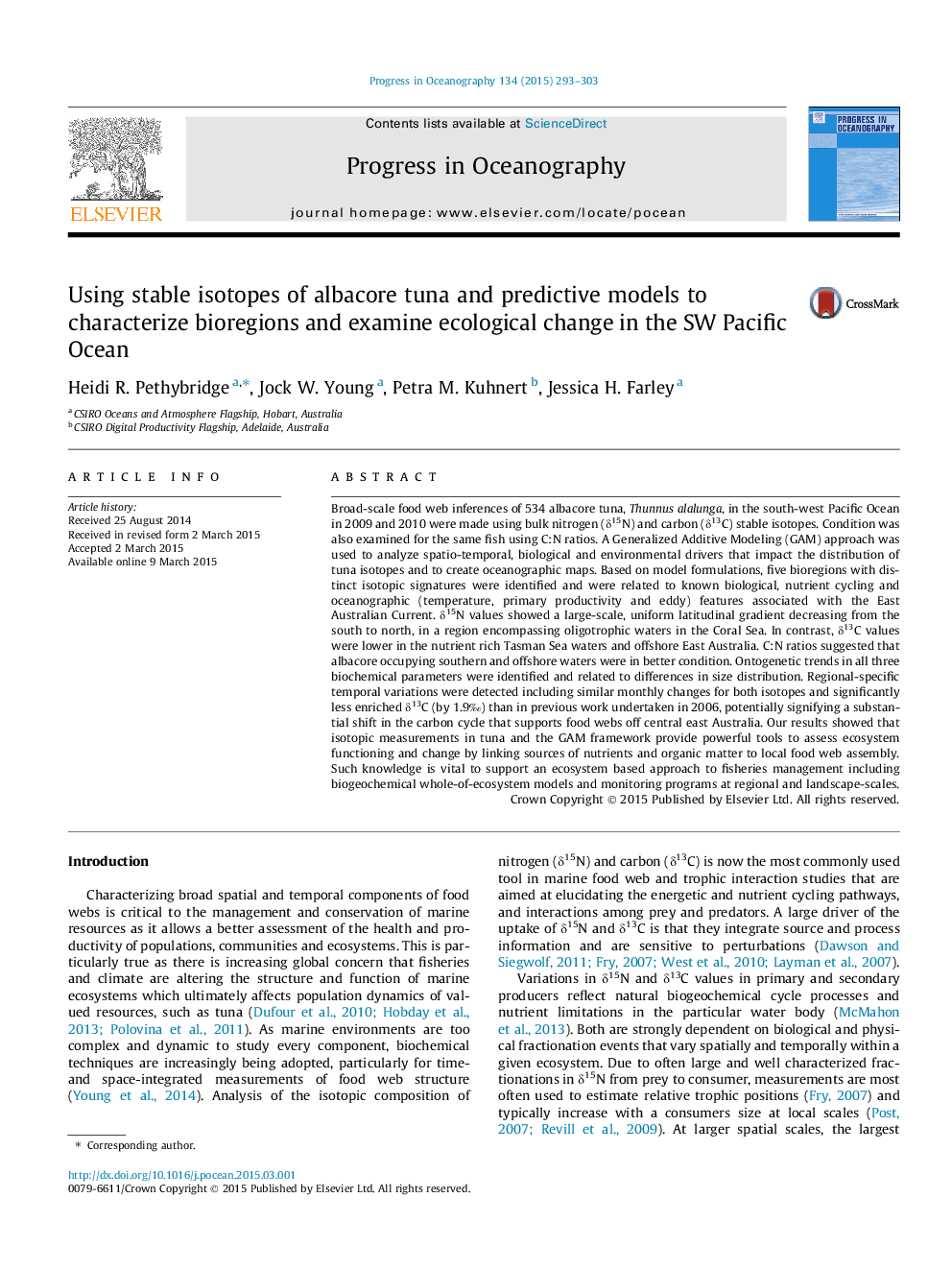| کد مقاله | کد نشریه | سال انتشار | مقاله انگلیسی | نسخه تمام متن |
|---|---|---|---|---|
| 6388588 | 1627922 | 2015 | 11 صفحه PDF | دانلود رایگان |
- Isotopic carbon and nitrogen measurements reported in a data-poor ocean basin.
- Predictive models developed to detect landscape-scale functional changes.
- Isoscapes produced to characterize latitudinal gradients and distinct bioregions.
- A large temporal change in δ13C off central Australia suggests possible regime shift.
- Isotopes of tuna can be used to monitor ecosystem change at multiple scales.
Broad-scale food web inferences of 534 albacore tuna, Thunnus alalunga, in the south-west Pacific Ocean in 2009 and 2010 were made using bulk nitrogen (δ15N) and carbon (δ13C) stable isotopes. Condition was also examined for the same fish using C:N ratios. A Generalized Additive Modeling (GAM) approach was used to analyze spatio-temporal, biological and environmental drivers that impact the distribution of tuna isotopes and to create oceanographic maps. Based on model formulations, five bioregions with distinct isotopic signatures were identified and were related to known biological, nutrient cycling and oceanographic (temperature, primary productivity and eddy) features associated with the East Australian Current. δ15N values showed a large-scale, uniform latitudinal gradient decreasing from the south to north, in a region encompassing oligotrophic waters in the Coral Sea. In contrast, δ13C values were lower in the nutrient rich Tasman Sea waters and offshore East Australia. C:N ratios suggested that albacore occupying southern and offshore waters were in better condition. Ontogenetic trends in all three biochemical parameters were identified and related to differences in size distribution. Regional-specific temporal variations were detected including similar monthly changes for both isotopes and significantly less enriched δ13C (by 1.9â°) than in previous work undertaken in 2006, potentially signifying a substantial shift in the carbon cycle that supports food webs off central east Australia. Our results showed that isotopic measurements in tuna and the GAM framework provide powerful tools to assess ecosystem functioning and change by linking sources of nutrients and organic matter to local food web assembly. Such knowledge is vital to support an ecosystem based approach to fisheries management including biogeochemical whole-of-ecosystem models and monitoring programs at regional and landscape-scales.
Journal: Progress in Oceanography - Volume 134, May 2015, Pages 293-303
